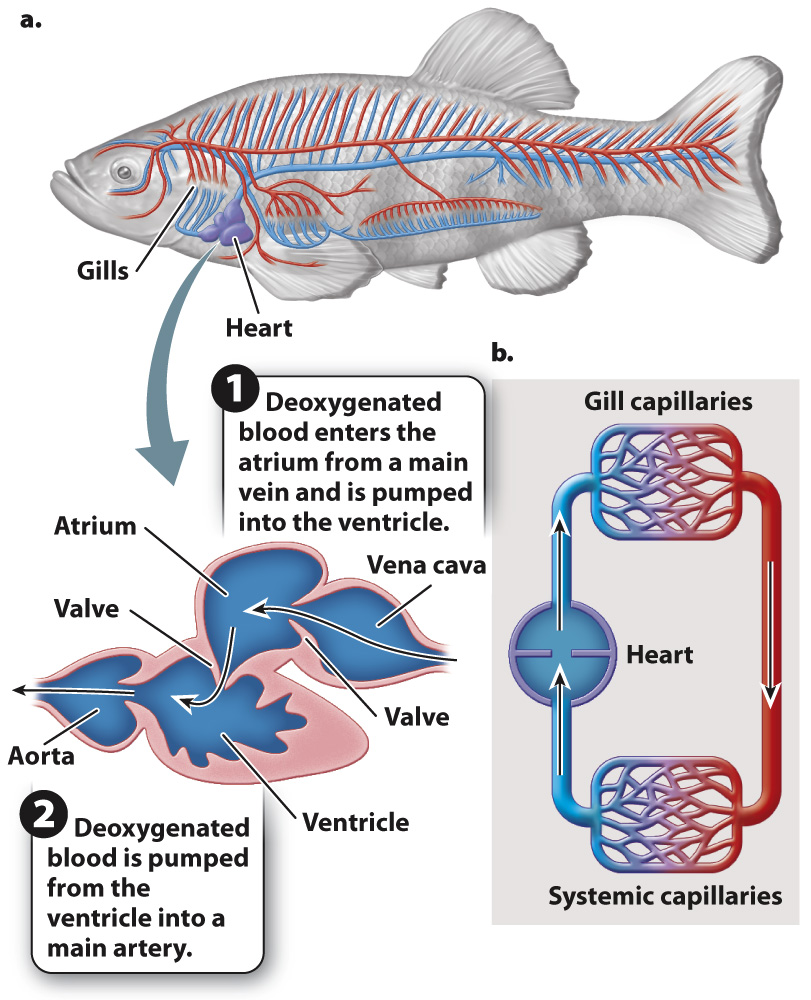Fish have two-
Fish hearts have two chambers (Fig. 39.20), an atrium (plural, atria) and a ventricle. Deoxygenated blood returning from the fish’s tissues enters the atrium, which fills and then contracts to move the blood into a thicker-

FIG. 39.20 Fish heart and circulatory system. (a) Fish have a two-
The small gill capillaries impose a large resistance to flow. As a result, much of the blood pressure is lost in moving blood through the gills. This loss of pressure limits the flow of oxygenated blood to body tissues.